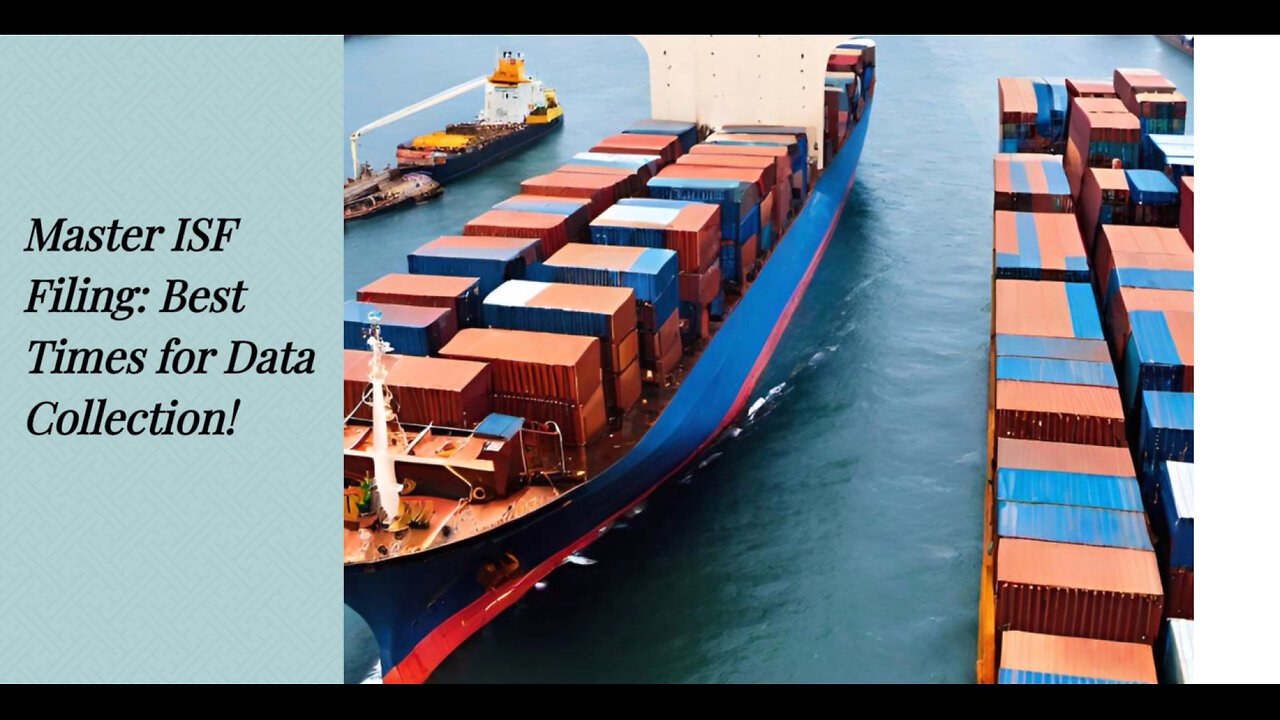Premium Only Content

Maximizing Efficiency: The Ideal Timing for ISF Filing Data Collection
ISF Template | 562-453-7357 | isf@isftemplate.com | www.isftemplate.com
In this video, we discuss the ideal timing for Importer Security Filing (ISF) data collection, emphasizing the importance of timing in ensuring a smooth customs clearance process and compliance with regulations. We start by introducing the 10+2 rule, which requires importers to submit specific information about their cargo to CBP at least 24 hours before the vessel departs from its foreign port. We then highlight the key steps involved in determining the ideal timing for ISF filing, including obtaining departure information from the shipping carrier or freight forwarder and calculating the lead time for data collection. We stress the need for allowing ample time to collect accurate and complete data, working closely with the importer to gather the required information, and ensuring the accuracy of information to prevent any issues during customs clearance. Finally, we emphasize the importance of proactive early filing, reducing the risk of penalties and giving CBP sufficient time for review. We conclude by underscoring the significance of timely and accurate ISF filing in maintaining compliance, facilitating smooth cargo transportation, and avoiding potential disruptions in the supply chain.
#usimportbond #isfcustomsbroker #uscustomsclearing #isfentry
Video Disclaimer Here: This video is designed for education and is unaffiliated with US government bodies.
0:27 - ISF filing is crucial for customs clearance and requires specific information about cargo to be submitted to CBP at least 24 hours before the vessel departs.
0:47 - Understanding the vessel's departure time, calculating lead time, and collecting accurate data early are key for successful ISF filing.
1:07 - Factors affecting lead time include shipment complexity, document availability, and data collection efficiency.
-
 1:05:47
1:05:47
Donald Trump Jr.
8 hours agoMexico Sends Troops to Border, Plus USAid Scam Exposed, Live with Brooke Goldstein & Rep Brian Mast | TRIGGERED Ep.213
200K136 -
 9:26
9:26
Rethinking the Dollar
4 hours agoUnbelievable Government Waste: 5 Outrageous Biden-Era Spending Sprees
128 -
 LIVE
LIVE
Flyover Conservatives
21 hours agoDR. KIRK ELLIOTT | Deep Dive: Tariffs, Tech, and Total Economic Warfare – Who Wins and Who Loses? | In Studio - FOC Show
1,018 watching -
 LIVE
LIVE
Danny Polishchuk
6 hours agoTariffs and Trade Wars + Nick Rochefort | Low Value Mail #136
350 watching -
 LIVE
LIVE
I_Came_With_Fire_Podcast
8 hours agoCartels vs The United States, Fentanyls 2 Front WAR, and FTOs
151 watching -
 4:54
4:54
CryptoWrld
9 hours agoCrypto Startup Launches Tokenized US Treasury Bonds
7.7K2 -
 LIVE
LIVE
We Like Shooting
15 hours ago $0.03 earnedWe Like Shooting 596 (Gun Podcast)
198 watching -
 54:43
54:43
Kimberly Guilfoyle
8 hours agoThe Trump Effect: Mexico Folds, Live with Dinesh D’Souza & Chuck DeVore | Ep.193
78.5K31 -
 1:20:47
1:20:47
Redacted News
6 hours agoMexico CAVES to Trump over tariffs, USAID Shutdown, & Zelensky loses $200 billion | Redacted Live
155K410 -
 1:02:29
1:02:29
The StoneZONE with Roger Stone
3 hours agoIs GOP Sen. Bill Cassidy Playing Politics with RFK Jr. Vote as U.S. Faces Public Health Crisis?
12.4K4